Summary: In the article, you will know the zoo mesh knowledge, how to choose best mesh for aviary projects; I bring 10 cases to show what mesh is best match the aviary enclosure. Some knowledge from Wikipedia.
Part 1 – ZOO MESH
What is zoo mesh?
Zoo Mesh is fine stainless steel knitted wire mesh, creates a Safe Environment for the Animals and Visitors. Because the mesh is frequently use for zoo projects, such as animal enclosure fence, bird enclosure, so guys call it “zoo mesh”.
Why handwoven stainless steel netting call to zoo mesh?
Handwoven stainless steel netting is hand made, with stainless steel rope material 304/316. We are best known for producing custom mesh for use in construction zoo animal and aviary projects.
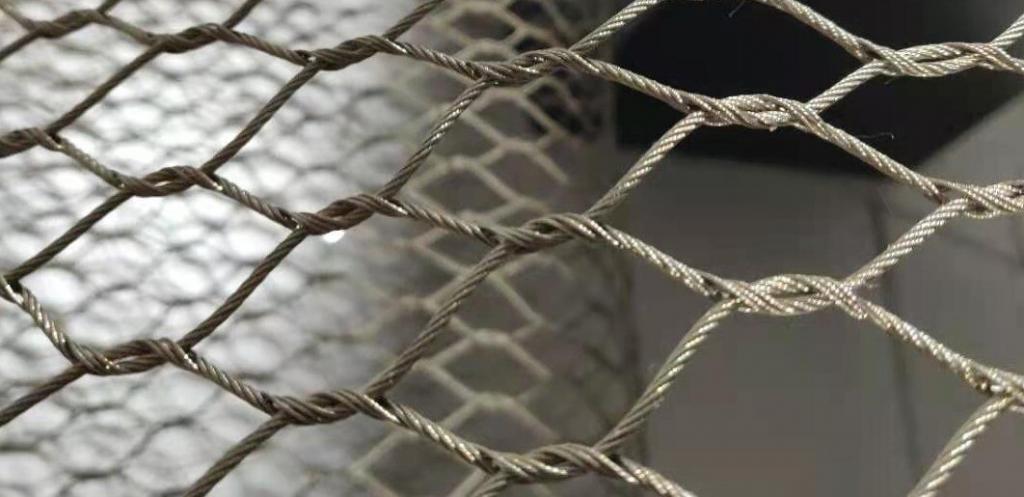
Handwoven stainless steel netting have better quality such as High Strength, Flexible, Lightweight, UV and Weather. Also resistance, non-rust, non-corrosion, Simple structure, sturdy and durable, service life of more than 30 years.
As the netting mainly use for zoo enclosure fence, zoo aviaries, so guys friendly call it “zoo mesh”
PART 2 – WHAT IS THE BEST WIRE MESH FOR AVIARY
Until now, we know the handwoven stainless steel netting is useful wire mesh for aviaries. Then how to choose the mesh specification for different aviaries projects? In the part, I list 10 kinds bird aviary projects to show the mesh specifications in the aviaries.
1. What is the Best wire mesh for Eagle aviary enclosure – 3” mesh
Eagles are large, powerfully built birds of prey, with heavy heads and beaks. Even the smallest eagles, such as the booted eagle, which is comparable in size to a common buzzard or red-tailed hawk, have relatively longer and more evenly broad wings, and more direct, faster flight – despite the reduced size of aerodynamic feathers.
Most eagles are larger than any other raptors apart from some vultures. The smallest species of eagle is the South Nicobar serpent eagle, at 450 g (1 lb) and 40 cm (16 in).
Like all birds of prey, eagles have very large hooked beaks for ripping flesh from their prey, strong, muscular legs, and powerful talons. The beak is typically heavier than that of most other birds of prey. Eagles’ eyes are extremely powerful.
It is estimated that the martial eagle, whose eyes are more than two times larger than the human eye, has a visual acuity up to 8 times that of humans. This acuity enables eagles to spot potential prey from a very long distance.
This keen eyesight is primarily attributed to their extremely large pupils which ensure minimal diffraction (scattering) of the incoming light. The female of all known species of eagles is larger than the male.
To choose mesh specification for aviary, be aimed at hold the birds in and safety, so the case use 3” mesh for eagle enclosure.
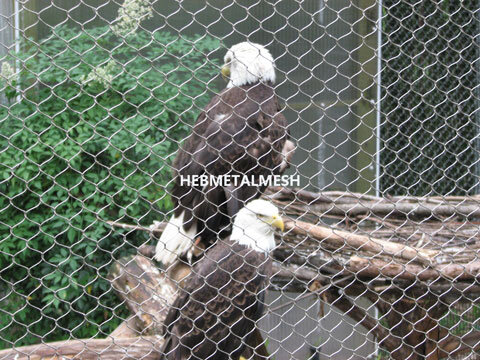
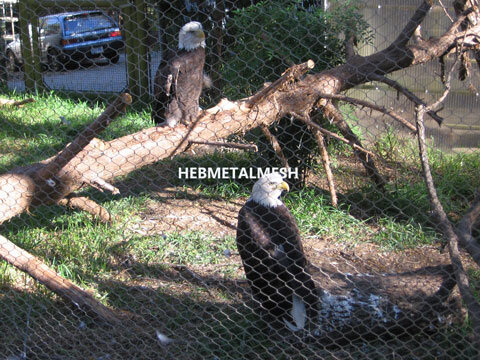
2. The Best wire mesh for Macaw aviary exhibit – 2” mesh
Macaws are a group of New World parrots that are long-tailed and often colorful. They are popular in aviculture or as companion parrots, although there are conservation concerns about several species in the wild.
Proportionately larger beaks, long tails, and relatively bare, light-coloured, medial areas distinguish macaws from other parrots. Sometimes the facial patch is smaller in some species and limited to a yellow patch around the eyes and a second patch near the base of the beak in the members of the genus Anodorhynchus. A macaw’s facial feather pattern is as unique as a fingerprint.
Consider the Macaw aviary mesh have destructiveness for their fence, so the case choose 2” mesh for macaw exhibit.
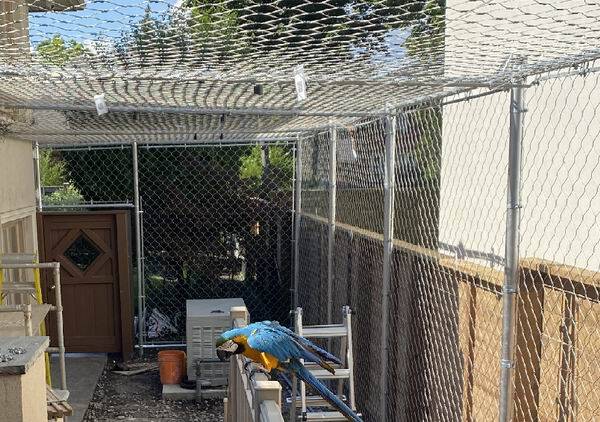

3. Small parrots aviary – 1” mesh
Parrots, along with ravens, crows, jays, and magpies, are among the most intelligent birds, and the ability of some species to imitate human speech enhances their popularity as pets.
Measures taken to conserve the habitats of some high-profile charismatic species have also protected many of the less charismatic species living in the same ecosystems.
Consider the small parrots size, for hold them in the aviary enclosure, then choose 1” mesh for small parrots.
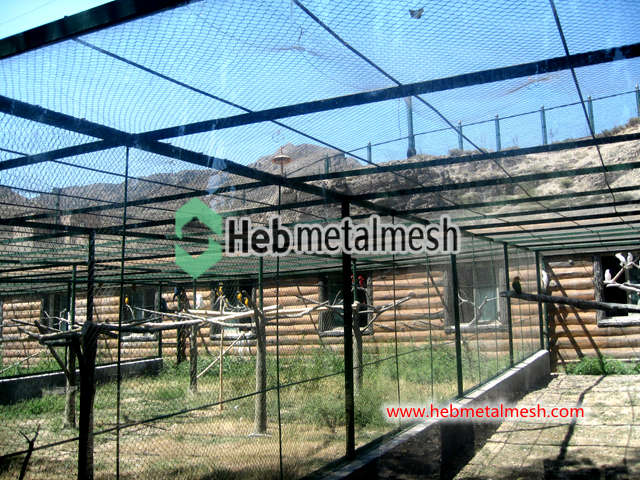
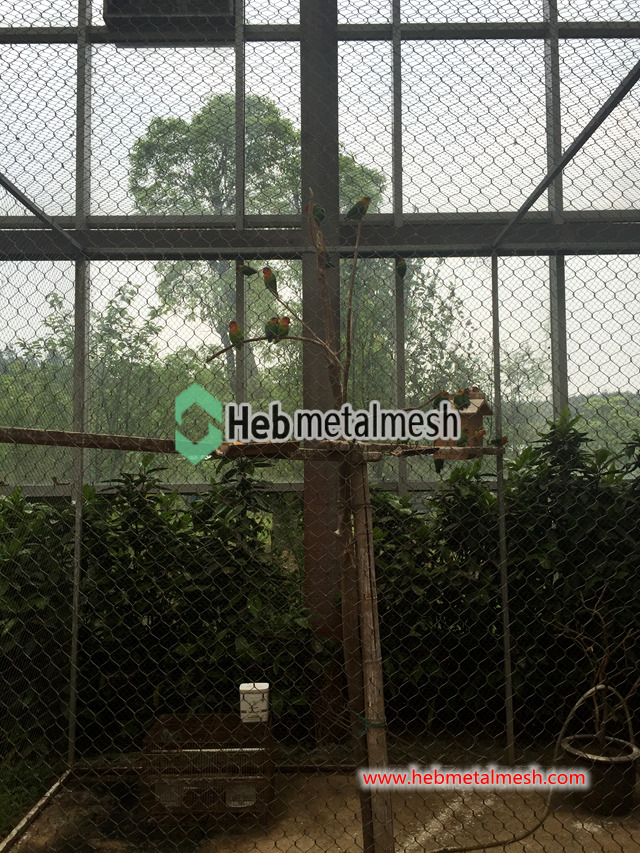
4. Pheasant enclosure – 2” mesh
Pheasants are birds of several genera within the family Phasianidae in the order Galliformes. Though they can found world over in introduced populations, the pheasant genera native range is restricted to Eurasia.
The classification “pheasant” is paraphyletic, as birds referred to as pheasants are included within both the subfamilies Phasianinae and Pavoninae. and in many cases are more closely related to smaller phasianids, grouse, and turkey than to other pheasants.
The pheasant is beautiful but no destructiveness, so can consider the aviary small thin 2” mesh for small parrots enclosure.
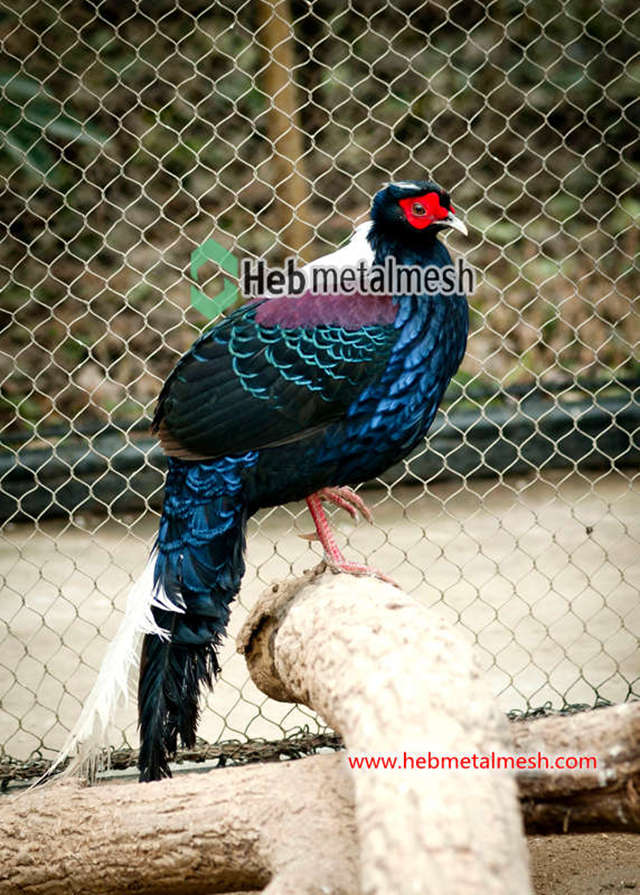
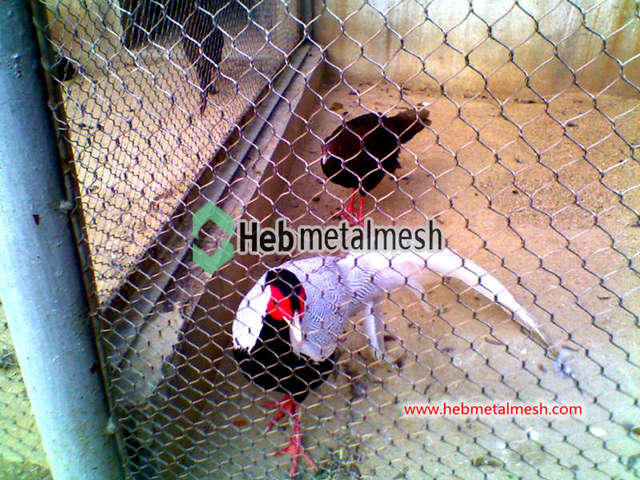
5. Ostrich enclosure – 3” mesh
Struthio is a genus of birds in the order Struthioniformes, whose members are the ostriches. It is part of the infra-class Palaeognathae, a diverse group of flightless birds also known as ratites that includes the emus, rheas, and kiwis.
There are two living species of ostrich: the common ostrich and the Somali ostrich. They are large flightless birds of Africa who lay the largest eggs of any living land animal. With the ability to run at 70 km/h (43.5 mph), they are the fastest birds on land.
They are farm worldwide, particularly for their feathers as they are used as decoration and feather dusters. Their skin is also use for leather products. Ostriches are notable for being the heaviest living birds.
Consider the Ostrich property, the aviary projects use 3” mesh for ostrich enclosure with thick wire rope.

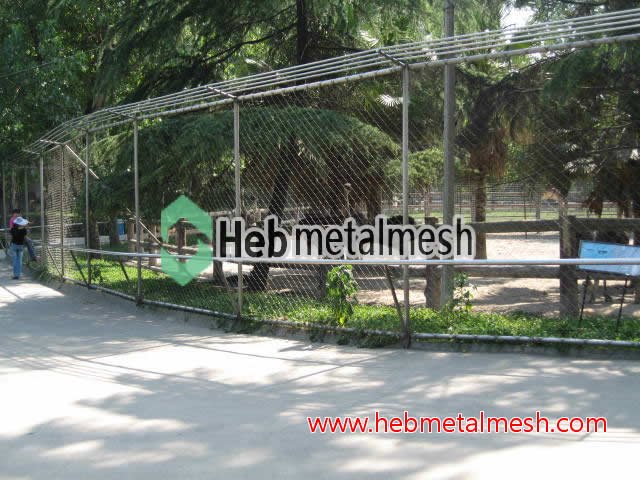
6. Flamingo enclosure – 2” mesh
Flamingos or flamingoes are a type of wading bird in the family Phoenicopteridae, which is the only bird family in the order Phoenicopteriformes. For our flamingo species distributed throughout the Americas, and two species native to Africa, Asia, and Europe.
It is common birds in zoo or bird park, due the kind of birds is no any aggressively, even some zoos no build enclosure for them, but if want to hold them in aviary enclosure can choose 2” mesh for flamingo enclosure with thin wire rope.
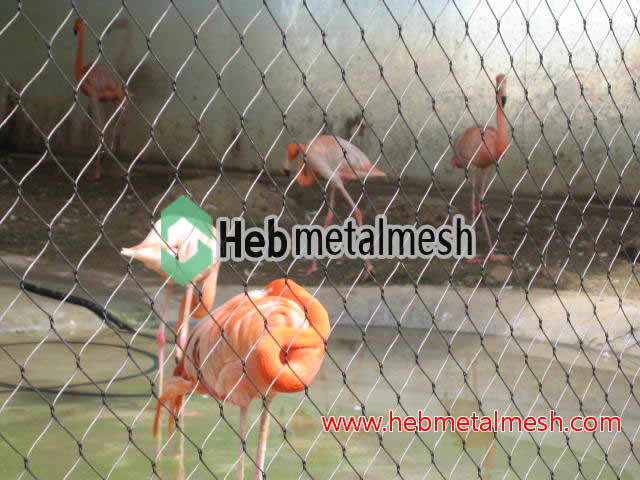
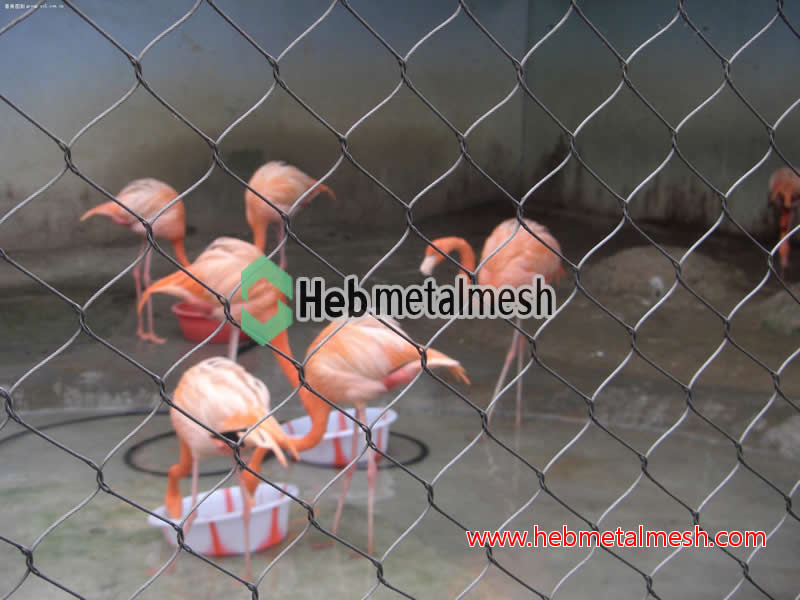
7. Peacock enclosure – 2” mesh
Peafowl is a common name for three bird species in the genera Pavo and Afropavo within the subtribe Pavonina of the family Phasianidae, the pheasants and their allies.
The two Asiatic species are the blue or Indian peafowl originally of the Indian subcontinent, and the green peafowl of Southeast Asia; the one African species is the Congo peafowl, native only to the Congo Basin.
The latter is especially prominent in the Asiatic species, which have an eye-spotted “tail” or “train” of covert feathers, which they display as part of a courtship ritual.
For the peacock, only purpose is hold them out to their aviary enclosure, so 2” mesh for peacock enclosure with thin wire rope will be best.
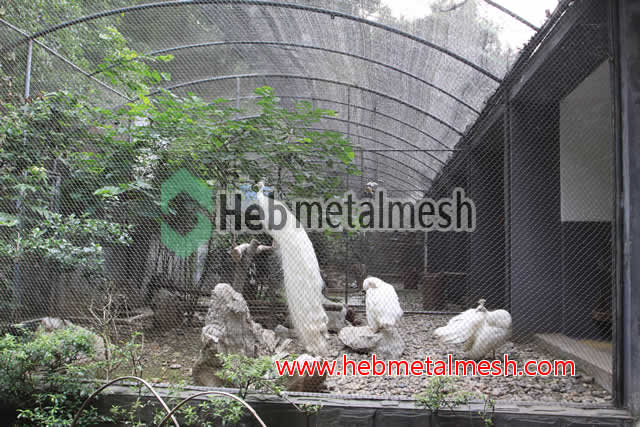
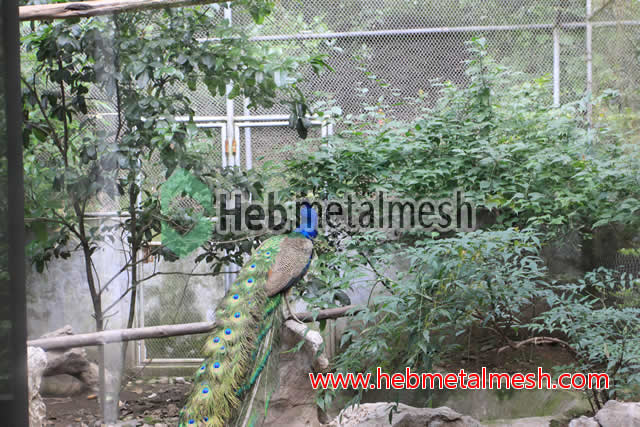
8. Toucan enclosure – 2” mesh
Toucans are members of the Neotropical near passerine bird family Ramphastidae. The Ramphastidae are most closely related to the American barbets. They are brightly marked and have large, often colorful bills. The family includes five genera and over forty different species.
Toucan are arboreal and typically lay 2–21 white eggs in their nests. They make their nests in tree hollows and holes excavated by other animals such as woodpeckers—the toucan bill has very limited use as an excavation tool.
When the eggs hatch, the young emerge completely naked, without any down. Toucans are resident breeders and do not migrate.
Toucans are usually found in pairs or small flocks. They sometimes fence with their bills and wrestle, which scientists hypothesize they do to establish dominance hierarchies. In Africa and Asia, hornbills occupy the toucans’ ecological niche, an example of convergent evolution.
Consider the Ostrich property, the projects use 2” mesh for toucan enclosure with thick wire rope.
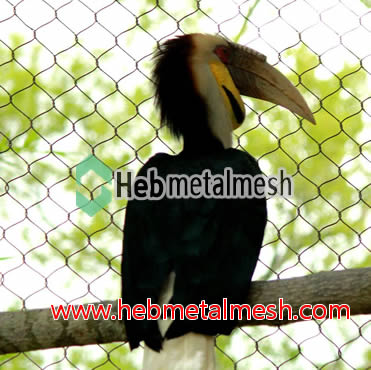

9. Crane enclosure – 2” mesh
Cranes are a family, the Gruidae, of large, long-legged, and long-necked birds in the group Gruiformes. Unlike the similar-looking but unrelated herons, cranes fly with necks outstretched, not pulled back. Cranes live on all continents except Antarctica and South America.
They are opportunistic feeders that change their diets according to the season and their own nutrient requirements. They eat a range of items from small rodents, eggs of birds, fish, amphibians, and insects to grain and berries.
Cranes construct platform nests in shallow water, and typically lay two eggs at a time. Both parents help to rear the young, which remain with them until the next breeding season.
Some species and populations of cranes migrate over long distances; others do not migrate at all. Cranes are solitary during the breeding season, occurring in pairs, but during the nonbreeding season, most species are gregarious, forming large flocks where their numbers are sufficient.
For Crane aviary enclosure, choose 2” mesh for crane enclosure is best:
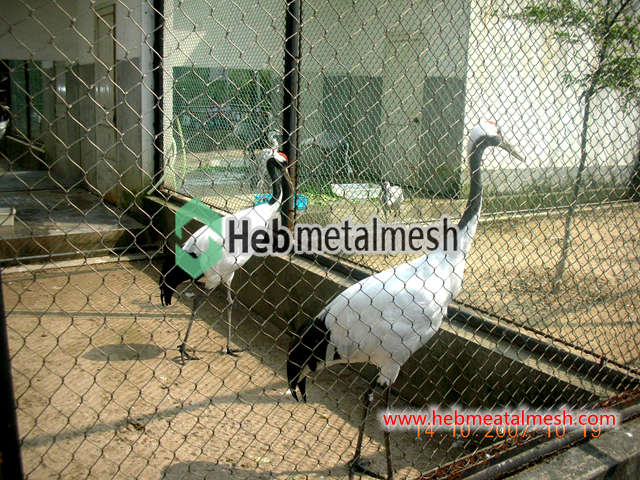
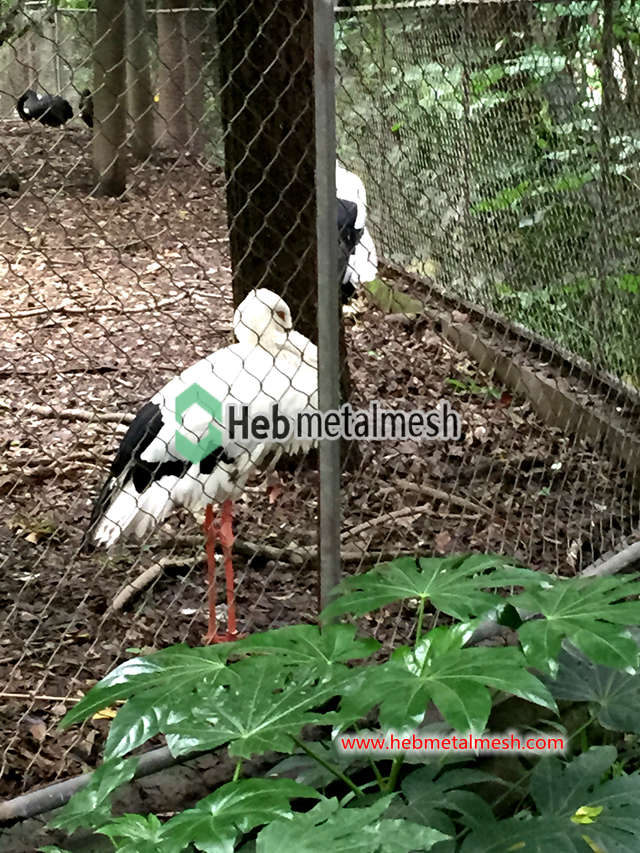
10. What is the best mesh for common big aviary -1” mesh
In a zoo, you often can see a large aviary and many kinds bird in, small, big. So build the large aviary, first consider which kind of bird is smallest, so we can base this to choose mesh to hold all.
And, you need consider the weight of mesh, so heavy is not match, because you need consider the weather, when snow come, we need confirm the construction and mesh are not breakdown.
Then choose the handwoven stainless steel netting of 1” mesh is good for the large aviary.
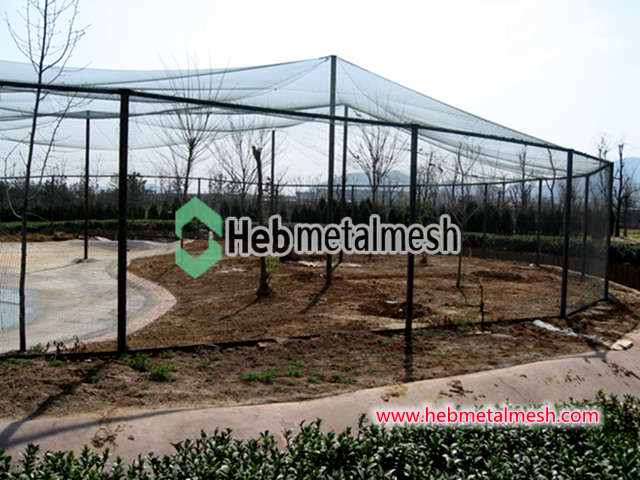
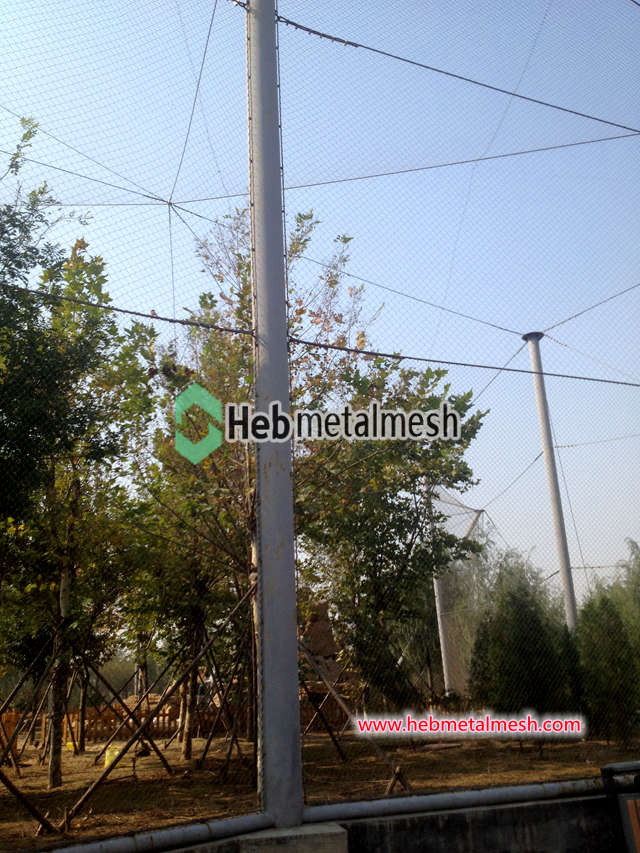
Part 3 – CONCLUSION
Of course, in the world have many kinds of lovely birds, I can’t list all for now. But if you have any case or mind, I welcome email me for more discussion. Or maybe you are building an aviary enclosure now, so you also contact me for some suggests.
In the end, I will say, it is not only choose of handwoven stainless steel netting, also can consider other type wire mesh. But I hope you can let handwoven stainless steel netting as one of your mind, because in these years, the mesh is very fashion in the field of zoo projects.

